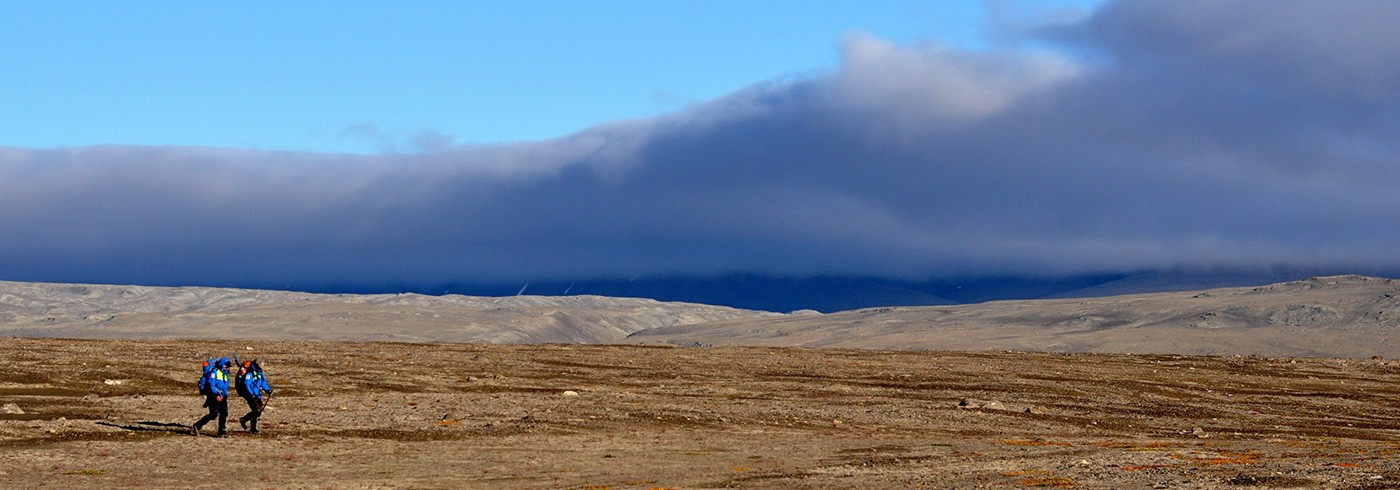One of the few things that are usually true about a research plan is that it doesn’t work as expected, and if you’re lucky it will lead into something completely different but equally (or even more) exciting.
I’m an evolutionary geneticist and my research is focused on ancient DNA, i.e. DNA from historical samples and extinct organisms. My plan here was to look for sites where melting permafrost uncovers old bones and use these to study changes in the genetic structure of local populations. However, we ended up in an Arctic desert with no permafrost cliffs. This doesn’t eliminate the possibility that some of the bones we found on the surface are old, but we cannot be sure unless we send them for radiocarbon dating.
I won’t deny I was a bit disappointed until Fredrik came with the idea to look inside the Arctic fox dens and snowy owl nests. It is incredible how many lemming bones can be found on top of a snowy owl nest. It’s like a lemming war cemetery. Luckily for us, some of the hundreds of bones got buried under layers of sediments and we can now dig them out, analyze the DNA and radiocarbon dates and compare with the DNA from modern lemming bones that we find on the surface.
An advantage of the Arctic environment is that the stable cold temperature helps to preserve DNA and works as a fridge for centuries, millennia or even longer. The oldest sample sequenced so far was a 700,000-year-old horse and the techniques for extracting ancient DNA are still improving. Here in Hall Land, we can only find samples dating back several thousands of years, because during the last Ice Age the valley was under the sea, but even studying the history of Hall Land on a “smaller” time scale can be an excellent source of information about how the Arctic environment has changed since the last Ice Age.


